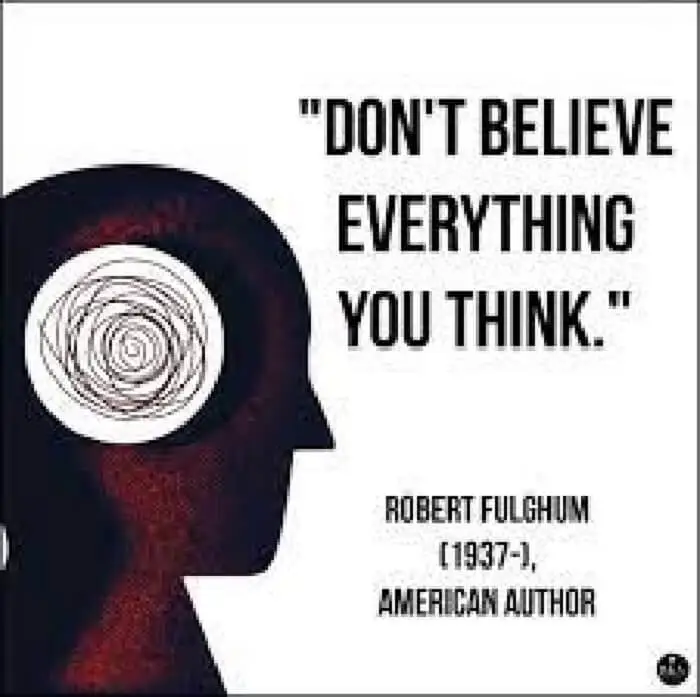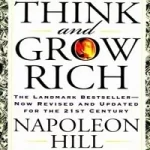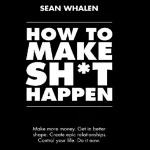Introduction
In a world bombarded with information, it’s easy to accept our thoughts at face value. However, the importance of critical thinking cannot be overstated. This article delves into the impact of unquestioned beliefs, the significance of cognitive biases, and the transformative power of embracing skepticism.
| Name of PDF | Don’t Believe Everything You Think PDF |
|---|---|
| No Pages | 124 |
| Author | Brené Brown |
| Originally Published | Joseph Nguyen |
| Language | English |
| Genres | Self-help book, Self-improvement |
| Size | 1.24 MB |
| Chek latest edition |

Table of Contents
Understanding Cognitive Biases
Definition and Types
Decision-making is affected by natural mental shortcuts known as cognitive biases. Understanding these biases is crucial to unraveling the complexities of thought processes. We’ll explore common biases, such as confirmation bias and availability heuristics, shedding light on their impact.
The Impact of Believing Without Questioning
Real-Life Examples
Examining real-life instances where blind belief led to undesirable consequences highlights the potential pitfalls. From historical events to contemporary issues, the repercussions of accepting information without scrutiny become evident.
Consequences of Blind Belief
What happens when we unquestionably accept information? This section explores the tangible consequences, emphasizing the need for a more critical approach to information consumption.
The Power of Critical Thinking
Developing Critical Thinking Skills
Fostering critical thinking skills is a journey towards intellectual empowerment. We’ll discuss practical strategies to nurture these skills, encouraging readers to question assumptions and engage in independent analysis.
Questioning Your Own Thoughts
The ability to question one’s own thoughts is a hallmark of a critical thinker. This section explores the introspective aspect of critical thinking, urging readers to challenge their beliefs and consider alternative perspectives.

Media Literacy and Critical Thinking
Recognizing Misinformation
In an era of information overload, distinguishing between reliable and misleading information is challenging. We’ll explore the importance of media literacy and provide tips for recognizing and avoiding misinformation.
Fact-Checking Techniques
Equipping oneself with fact-checking techniques is essential. This section offers practical advice on verifying information, empowering readers to navigate a world saturated with conflicting narratives.
Navigating Social Media
Filters and Echo Chambers
Social media platforms often serve content based on algorithms, creating filter bubbles and echo chambers. Understanding these dynamics is crucial for maintaining a diverse and well-informed perspective.
Distinguishing Facts from Opinions
Discerning between facts and opinions is a skill that can be honed. We’ll provide insights into identifying credible information and avoiding the pitfalls of online misinformation.
Cultivating Skepticism
Encouraging Healthy Skepticism
Skepticism doesn’t imply perpetual doubt but rather a thoughtful approach to information. This section encourages readers to cultivate healthy skepticism, striking a balance between trust and doubt.
Balancing Trust and Doubt
Exploring the delicate balance between trusting information sources and maintaining a healthy dose of doubt is key to developing a discerning mindset.
The Psychology Behind Belief
Cognitive Dissonance
Understanding the psychological concept of cognitive dissonance sheds light on why we sometimes resist questioning our beliefs. Unraveling this phenomenon is essential for embracing critical thinking.
Motivated Reasoning
Exploring the concept of motivated reasoning, we delve into how personal motivations can shape our beliefs and influence decision-making.

Educational Initiatives for Critical Thinking
Integrating Critical Thinking in Schools
Education plays a pivotal role in shaping critical thinking skills. We’ll discuss the importance of integrating critical thinking into formal education systems.
Lifelong Learning Strategies
Critical thinking is not limited to classrooms. This section explores strategies for continuous learning and intellectual growth beyond traditional educational settings.
Challenging Assumptions
Self-Reflection
Encouraging self-reflection is a powerful tool for challenging assumptions. This section explores how introspection can lead to personal growth and a more nuanced worldview.
Embracing Diverse Perspectives
Fostering an appreciation for diverse perspectives is vital for well-rounded critical thinking. We’ll explore the benefits of embracing viewpoints different from our own.
Overcoming Confirmation Bias
Seeking Contradictory Information
Confirmation bias, the tendency to favor information confirming existing beliefs, can hinder critical thinking. Strategies for overcoming this bias will be discussed, emphasizing the importance of seeking contradictory information.
Open-Mindedness
Cultivating an open mind is integral to the critical thinking process. This section explores the value of open-mindedness and its impact on decision-making and problem-solving.
Practical Tips for Critical Thinking
Pause and Reflect
In the hustle and bustle of daily life, taking a moment to pause and reflect enhances critical thinking. Practical tips for incorporating this habit into daily routines will be shared.
Analyze Different Viewpoints
Considering various perspectives is a cornerstone of critical thinking. This section provides guidance on analyzing different viewpoints to arrive at more informed conclusions.
Benefits of Skepticism
Improved Decision Making
Skepticism isn’t just about doubt; it’s a tool for making better decisions. This section explores how a skeptical mindset contributes to more thoughtful and informed choices.
Enhanced Problem-Solving
Critical thinking goes hand in hand with effective problem-solving. We’ll discuss how the skills developed through skepticism can be applied to navigate challenges successfully.
Applying Critical Thinking in Daily Life
Personal Relationships
Critical thinking isn’t confined to academic or professional settings. This section explores how applying critical thinking enhances personal relationships, fostering understanding and empathy.
Professional Growth
In the workplace, critical thinking is a valuable asset. We’ll discuss how cultivating critical thinking skills contributes to professional growth and success.
Conclusion by Don’t Believe Everything You Think PDF
In conclusion, the journey of critical thinking is transformative. By questioning our thoughts, navigating the information landscape with discernment, and embracing skepticism, we unlock the potential for personal and intellectual growth.
FAQs about Don’t Believe Everything You Think PDF
Is skepticism the same as cynicism?
Skepticism involves thoughtful questioning, while cynicism is often characterized by a general distrust. They have distinct attitudes.
How can I overcome confirmation bias?
Actively seek out information that challenges your existing beliefs. Engage with diverse perspectives to counter confirmation bias.
Can critical thinking be taught?
Yes, critical thinking can be taught and cultivated through education, practice, and a willingness to question assumptions.
What role does emotional intelligence play in critical thinking?
Emotional intelligence enhances critical thinking by fostering self-awareness and empathy, contributing to a more holistic approach to problem-solving.
Are there drawbacks to being overly skeptical?
While skepticism is valuable, being excessively skeptical can lead to a reluctance to accept credible information. Striking a balance is key.
What is the summary of don’t believe everything you think?
Reveals the root causes of psychological distress and provides guidance on how to easily create the life you want.
Why is everything you think you know so wrong?
Misguided ideas, anxiety, despair, stress, and past events can permanently imprint maladaptive mental patterns in our brains.
What does it mean when someone says, “Don’t believe everything you think”?
You don’t have to suffer because your thoughts aren’t always accurate.
What is the lesson in don’t believe everything you think?
Our own thoughts are the primary source of our suffering.





